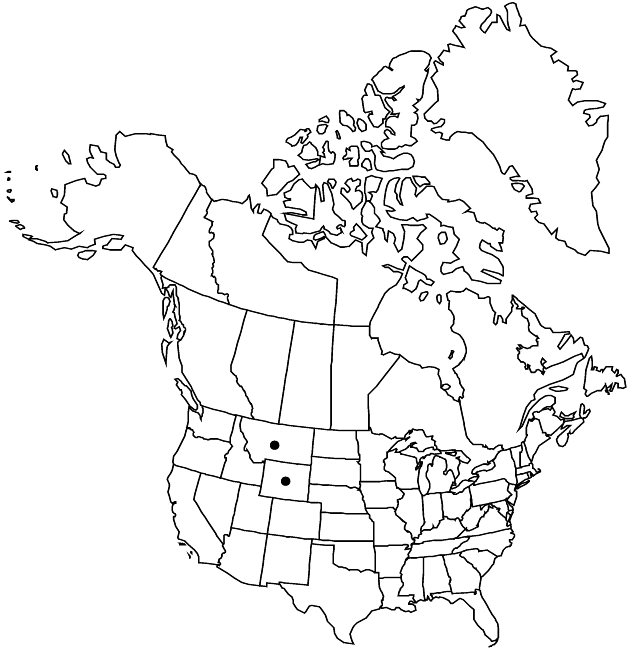Erigeron allocotus
J. Wash. Acad. Sci. 27: 379. 1937.
Perennials, 10–18 cm; taprooted, caudices multicipital or branched. Stems erect to ascending (branched, brittle), hispido-hirsute (hairs brittle), minutely glandular. Leaves basal (often not persistent) and cauline; blades spatulate 15–30 × 1.5–4 mm, cauline gradually reduced distally (reduced to bracts on peduncles), margins usually 3-lobed (lobes linear to oblong-oblanceolate, about as wide as central portion of blades), sometimes 2-ternate or (cauline) entire, faces sparsely hispido-hirsute, minutely glandular. Heads usually 2–4. Involucres 4–5 × 6–9 mm. Phyllaries in 2–3 series, glabrous or sometimes sparsely hispid, densely minutely glandular. Ray-florets 20–40; corollas white to bluish, sometimes drying pink, 3–6 mm, laminae not coiling or reflexing. Disc corollas 2.5–3.5 mm. Cypselae 2–2.3 mm, 2-nerved, faces sparsely strigose; pappi: outer of setae, inner of 12–20 bristles.
Phenology: Flowering May–Aug.
Habitat: Dry, calcareous sites on cliff faces, ledges, talus slopes, ridgetops, rock outcrops, barren redbeds, sometimes with Utah juniper, mountain mahogany, or sagebrush
Elevation: 1300–2300 m
Discussion
The brittle, hispid vestiture, and multiple small heads (more than one per stem) with short rays of Erigeron allocotus are unusual among its putative relatives with 3-parted leaves.
Selected References
None.
